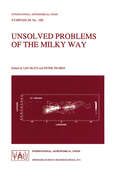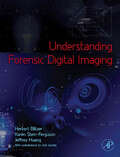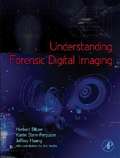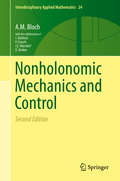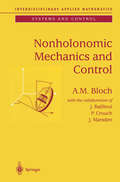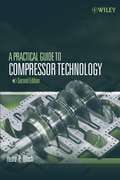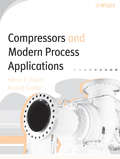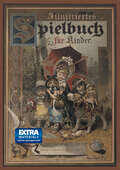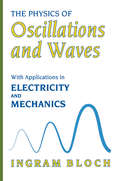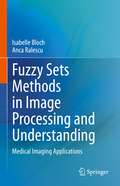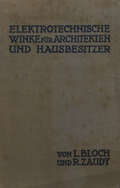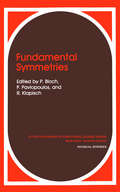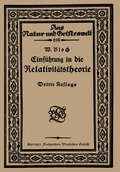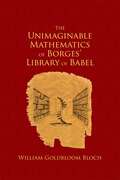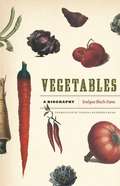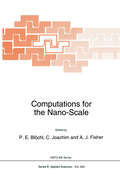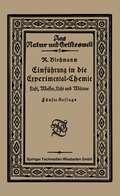- Table View
- List View
Unsolved Problems of the Milky Way (International Astronomical Union Symposia #169)
by Leo Blitz Peter TeubenAlthough the Milky Way is the most studied and best understood galactic system, there are many fundamental questions about our Galaxy that remain unanswered. This book concentrates on those questions which have the widest applicability in all of astrophysics, and for which answers are most likely to be forthcoming in the next few years. Is the Milky Way a barred spiral, and if so, what are its properties? Is the disk of the Milky Way axisymmetric and what does the answer tell us about its dynamical history? Is there a black hole at the center of the Galaxy? How far does the Galaxy extend? How much dark matter is there in the Milky Way system? And more.
The Law and Ethics of Freedom of Thought, Volume 1: Neuroscience, Autonomy, and Individual Rights (Palgrave Studies in Law, Neuroscience, and Human Behavior)
by Marc Jonathan Blitz Jan Christoph BublitzFreedom of thought is one of the great and venerable notions of Western thought, often celebrated in philosophical texts – and described as a crucial right in American, European, and International Law, and in that of other jurisdictions. What it means more precisely is, however, anything but clear; surprisingly little writing has been devoted to it. In the past, perhaps, there has been little need for such elaboration. As one Supreme Court Justice stressed, “[f]reedom to think is absolute of its own nature” because even “the most tyrannical government is powerless to control the inward workings of the mind.” But the rise of brain scanning, cognition enhancement, and other emerging technologies make this question a more pressing one. This volume provides an interdisciplinary exploration of how freedom of thought might function as an ethical principle and as a constitutional or human right. It draws on philosophy, legal analysis, history, and reflections on neuroscience and neurotechnology to explore what respect for freedom of thought (or an individual’s cognitive liberty or autonomy) requires.
Understanding Forensic Digital Imaging
by Herbert L. Blitzer Karen Stein-Ferguson Jeffrey HuangUnderstanding Forensic Digital Imaging offers the principles of forensic digital imaging and photography in a manner that is straightforward and easy to digest for the professional and student. It provides information on how to photograph any setting that may have forensic value, details how to follow practices that are acceptable in court, and recommends what variety of hardware and software are most valuable to a practitioner. In addition to chapters on basic topics such as light and lenses, resolution, and file formats, the book contains forensic-science-specific information on SWGIT and the use of photography in investigations and in court. Of particular note is Chapter 17, Establishing Quality Requirements, which offers information on how to create a good digital image, and is more comprehensive than any other source currently available.Covers topics that are of vital importance to the practicing professionalServes as an up-to-date reference in the rapidly evolving world of digital imagingUses clear and concise language so that any reader can understand the technology and science behind digital imaging
Understanding Forensic Digital Imaging (PDF)
by Herbert L. Blitzer Karen Stein-Ferguson Jeffrey HuangUnderstanding Forensic Digital Imaging offers the principles of forensic digital imaging and photography in a manner that is straightforward and easy to digest for the professional and student. It provides information on how to photograph any setting that may have forensic value, details how to follow practices that are acceptable in court, and recommends what variety of hardware and software are most valuable to a practitioner. In addition to chapters on basic topics such as light and lenses, resolution, and file formats, the book contains forensic-science-specific information on SWGIT and the use of photography in investigations and in court. Of particular note is Chapter 17, Establishing Quality Requirements, which offers information on how to create a good digital image, and is more comprehensive than any other source currently available. Covers topics that are of vital importance to the practicing professional Serves as an up-to-date reference in the rapidly evolving world of digital imaging Uses clear and concise language so that any reader can understand the technology and science behind digital imaging
Nonholonomic Mechanics and Control (Interdisciplinary Applied Mathematics #24)
by A.M. BlochThis book explores connections between control theory and geometric mechanics. The author links control theory with a geometric view of classical mechanics in both its Lagrangian and Hamiltonian formulations, and in particular with the theory of mechanical systems subject to motion constraints. The synthesis is appropriate as there is a rich connection between mechanics and nonlinear control theory. The book provides a unified treatment of nonlinear control theory and constrained mechanical systems that incorporates material not available in other recent texts. The book benefits graduate students and researchers in the area who want to enhance their understanding and enhance their techniques.
Nonholonomic Mechanics and Control (Interdisciplinary Applied Mathematics #24)
by A.M. BlochThis book explores connections between control theory and geometric mechanics. The author links control theory with a geometric view of classical mechanics in both its Lagrangian and Hamiltonian formulations, and in particular with the theory of mechanical systems subject to motion constraints. The synthesis is appropriate as there is a rich connection between mechanics and nonlinear control theory. The book provides a unified treatment of nonlinear control theory and constrained mechanical systems that incorporates material not available in other recent texts. The book benefits graduate students and researchers in the area who want to enhance their understanding and enhance their techniques.
A Practical Guide to Compressor Technology
by Heinz P. BlochA Complete overview of theory, selection, design, operation, and maintenance This text offers a thorough overview of the operating characteristics, efficiencies, design features, troubleshooting, and maintenance of dynamic and positive displacement process gas compressors. The author examines a wide spectrum of compressors used in heavy process industries, with an emphasis on improving reliability and avoiding failure. Readers learn both the theory underlying compressors as well as the myriad day-to-day practical issues and challenges that chemical engineers and plant operation personnel must address. The text features: Latest design and manufacturing details of dynamic and positive displacement process gas compressors Examination of the full range of machines available for the heavy process industries Thorough presentation of the arrangements, material composition, and basic laws governing the design of all important process gas compressors Guidance on selecting optimum compressor configurations, controls, components, and auxiliaries to maximize reliability Monitoring and performance analysis for optimal machinery condition Systematic methods to avoid failure through the application of field-tested reliability enhancement concepts Fluid instability and externally pressurized bearings Reliability-driven asset management strategies for compressors Upstream separator and filter issues The text's structure is carefully designed to build knowledge and skills by starting with key principles and then moving to more advanced material. Hundreds of photos depicting various types of compressors, components, and processes are provided throughout. Compressors often represent a multi-million dollar investment for such applications as petrochemical processing and refining, refrigeration, pipeline transport, and turbochargers and superchargers for internal combustion engines. This text enables the broad range of engineers and plant managers who work with these compressors to make the most of the investment by leading them to the best decisions for selecting, operating, upgrading, maintaining, and troubleshooting.
Compressors and Modern Process Applications
by Heinz P. Bloch Arvind GodseA modern reference to the principles, operation, and applications of the most important compressor types Thoroughly addressing process-related information and a wider variety of the major compressor types of interest to process plants, Compressors and Modern Process Applications uniquely covers the systematic linkage of fluid processing machinery to the processes they serve. This book is a highly practical resource for professionals responsible for purchasing, servicing, or operating compressors. It describes the main features of over 300 petrochemical and refining schematics and associated process descriptions involving compressors and expanders in modern industry. The organized presentation of this reference covers first the basics of compressors and what they are, and then progresses to important operational and process issues. It then explains the underlying principles, operating modes, selection issues, and major hardware elements for compressors. Topics include double-acting positive displacement compressors, rotary positive displacement compressors, understanding centrifugal process gas compressors, power transmission and advanced bearing technology, centrifugal compressor performance, gas processing and turbo-expander applications, and compressors typically found in petroleum refining and other petrochemical processes. Suitable for plant operation personnel, machinery engineering specialists, process engineers,as well as undergraduate students of this subject, this book's special features include: * Flow schematics of modern process units and processes used in gas transport, gas conditioning, petrochemical manufacture, and petroleum refining * Listings of licensors for each process on the flow schematics * Identification of each process flow schematic of compressors, cryogenic, and hot gas expanders at their respective locations * Important overview of surge control, estimating compressor performance, applications for air separation and gas processing plants, petroleum refinery issues, and important criteria that govern compressor selection and application Placing hundreds of associated process flow schematics at the fingertips of professionals and students, author and industry expert Heinz Bloch facilitates comprehension of the workings of various petrochemical, oil refining, and product upgrading processes that are served by compressors.
Illustriertes Spielbuch für Kinder: Unterhaltende und belustigende Spiele und Beschäftigungen für kleine Kinder im Zimmer sowie im Freien
by Ida BlochDieser Buchtitel ist Teil des Digitalisierungsprojekts Springer Book Archives mit Publikationen, die seit den Anfängen des Verlags von 1842 erschienen sind. Der Verlag stellt mit diesem Archiv Quellen für die historische wie auch die disziplingeschichtliche Forschung zur Verfügung, die jeweils im historischen Kontext betrachtet werden müssen. Dieser Titel erschien in der Zeit vor 1945 und wird daher in seiner zeittypischen politisch-ideologischen Ausrichtung vom Verlag nicht beworben.
The Physics of Oscillations and Waves: With Applications in Electricity and Mechanics
by Ingram BlochExcept for digressions in Chapters 8 and 17, this book is a highly unified treatment of simple oscillations and waves. The phenomena treated are "simple" in that they are de scribable by linear equations, almost all occur in one dimension, and the dependent variables are scalars instead of vectors or something else (such as electromagnetic waves) with geometric complications. The book omits such complicated cases in order to deal thoroughly with properties shared by all linear os cillations and waves. The first seven chapters are a sequential treatment of electrical and mechanical oscillating systems, starting with the simplest and proceeding to systems of coupled oscillators subjected to ar bitrary driving forces. Then, after a brief discussion of nonlinear oscillations in Chapter 8, the concept of normal modes of motion is introduced and used to show the relationship between os cillations and waves. After Chapter 12, properties of waves are explored by whatever mathematical techniques are applicable. The book ends with a short discussion of three-dimensional vii viii Preface problems (in Chapter 16), and a study of a few aspects of non linear waves (in Chapter 17).
Fuzzy Sets Methods in Image Processing and Understanding: Medical Imaging Applications
by Isabelle Bloch Anca RalescuThis book provides a thorough overview of recent methods using higher level information (object or scene level) for advanced tasks such as image understanding along with their applications to medical images. Advanced methods for fuzzy image processing and understanding are presented, including fuzzy spatial objects, geometry and topology, mathematical morphology, machine learning, verbal descriptions of image content, fusion, spatial relations, and structural representations. For each methodological aspect covered, illustrations from the medical imaging domain are provided. This is an ideal book for graduate students and researchers in the field of medical image processing.
Elektrotechnische Winke für Architekten und Hausbesitzer
by L. Bloch R. ZaudyDieser Buchtitel ist Teil des Digitalisierungsprojekts Springer Book Archives mit Publikationen, die seit den Anfängen des Verlags von 1842 erschienen sind. Der Verlag stellt mit diesem Archiv Quellen für die historische wie auch die disziplingeschichtliche Forschung zur Verfügung, die jeweils im historischen Kontext betrachtet werden müssen. Dieser Titel erschien in der Zeit vor 1945 und wird daher in seiner zeittypischen politisch-ideologischen Ausrichtung vom Verlag nicht beworben.
Fundamental Symmetries (Ettore Majorana International Science Series #31)
by P. Bloch P. Pavlopoulos R. KlapischThe first course of the International School on Physics with Low Energy Antiprotons was held in Erice, Sicily at the Ettore Majorana Centre for Scientific Culture, from September 26 to October 3, 1986. The purpose of this School is to review the physics accessible to experiments using low energy antiprotons, in view of the new era of the CERN LEAR ring opened by the upgrade of the antiproton source at CERN (ACOL). In 1986 the first course covered topics related to fundamental symmetries. These Proceedings contain both the tutorial lectures and the various contributions presented during the School by the participants. The con tributions have been organized in six sections. The first section is devoted to gravitation, a particularly "hot" topic in view of recent speculations about deviations from Newton's and Einstein's theories. Section II covers various problems related to the matter-antimatter symmetries such as comparison of the proton and antiproton, inertial masses or spectroscopy of antihydrogen or other antiprotonic atoms. CP and CPT violations in weak interaction are presented in Section III. The test of symmetries in atomic physics experiments and the strong CP problem are covered in Section IV. Section V groups contributions related to high prec~s~on measurements of simple systems like protonium, muonium or the anomalous moment of the muon. The last section is devoted to the experimental challenge of polar izing antiproton beams.
Einführung in die Relativitätstheorie (Aus Natur und Geisteswelt #618)
by Werner BlochDieser Buchtitel ist Teil des Digitalisierungsprojekts Springer Book Archives mit Publikationen, die seit den Anfängen des Verlags von 1842 erschienen sind. Der Verlag stellt mit diesem Archiv Quellen für die historische wie auch die disziplingeschichtliche Forschung zur Verfügung, die jeweils im historischen Kontext betrachtet werden müssen. Dieser Titel erschien in der Zeit vor 1945 und wird daher in seiner zeittypischen politisch-ideologischen Ausrichtung vom Verlag nicht beworben.
The Unimaginable Mathematics of Borges' Library of Babel
by William Goldbloom Bloch"The Library of Babel" is arguably Jorge Luis Borges' best known story--memorialized along with Borges on an Argentine postage stamp. Now, in The Unimaginable Mathematics of Borges' Library of Babel, William Goldbloom Bloch takes readers on a fascinating tour of the mathematical ideas hidden within one of the classic works of modern literature. Written in the vein of Douglas R. Hofstadter's Pulitzer Prize-winning Gödel, Escher, Bach, this original and imaginative book sheds light on one of Borges' most complex, richly layered works. Bloch begins each chapter with a mathematical idea--combinatorics, topology, geometry, information theory--followed by examples and illustrations that put flesh on the theoretical bones. In this way, he provides many fascinating insights into Borges' Library. He explains, for instance, a straightforward way to calculate how many books are in the Library--an easily notated but literally unimaginable number--and also shows that, if each book were the size of a grain of sand, the entire universe could only hold a fraction of the books in the Library. Indeed, if each book were the size of a proton, our universe would still not be big enough to hold anywhere near all the books. Given Borges' well-known affection for mathematics, this exploration of the story through the eyes of a humanistic mathematician makes a unique and important contribution to the body of Borgesian criticism. Bloch not only illuminates one of the great short stories of modern literature but also exposes the reader--including those more inclined to the literary world--to many intriguing and entrancing mathematical ideas.
Vegetables: A Biography
by Evelyne Bloch-DanoFrom Michael Pollan to locavores, Whole Foods to farmers' markets, today cooks and foodies alike are paying more attention than ever before to the history of the food they bring into their kitchens—and especially to vegetables. Whether it’s an heirloom tomato, curled cabbage, or succulent squash, from a farmers' market or a backyard plot, the humble vegetable offers more than just nutrition—it also represents a link with long tradition of farming and gardening, nurturing and breeding. In this charming new book, those veggies finally get their due. In capsule biographies of eleven different vegetables—artichokes, beans, chard, cabbage, cardoons, carrots, chili peppers, Jerusalem artichokes, peas, pumpkins, and tomatoes—Evelyne Bloch-Dano explores the world of vegetables in all its facets, from science and agriculture to history, culture, and, of course, cooking. From the importance of peppers in early international trade to the most recent findings in genetics, from the cultural cachet of cabbage to Proust’s devotion to beef-and-carrot stew, to the surprising array of vegetables that preceded the pumpkin as the avatar of All Hallow’s Eve, Bloch-Dano takes readers on a dazzling tour of the fascinating stories behind our daily repasts. Spicing her cornucopia with an eye for anecdote and a ready wit, Bloch-Dano has created a feast that’s sure to satisfy gardeners, chefs, and eaters alike.
Vegetables: A Biography
by Evelyne Bloch-DanoFrom Michael Pollan to locavores, Whole Foods to farmers' markets, today cooks and foodies alike are paying more attention than ever before to the history of the food they bring into their kitchens—and especially to vegetables. Whether it’s an heirloom tomato, curled cabbage, or succulent squash, from a farmers' market or a backyard plot, the humble vegetable offers more than just nutrition—it also represents a link with long tradition of farming and gardening, nurturing and breeding. In this charming new book, those veggies finally get their due. In capsule biographies of eleven different vegetables—artichokes, beans, chard, cabbage, cardoons, carrots, chili peppers, Jerusalem artichokes, peas, pumpkins, and tomatoes—Evelyne Bloch-Dano explores the world of vegetables in all its facets, from science and agriculture to history, culture, and, of course, cooking. From the importance of peppers in early international trade to the most recent findings in genetics, from the cultural cachet of cabbage to Proust’s devotion to beef-and-carrot stew, to the surprising array of vegetables that preceded the pumpkin as the avatar of All Hallow’s Eve, Bloch-Dano takes readers on a dazzling tour of the fascinating stories behind our daily repasts. Spicing her cornucopia with an eye for anecdote and a ready wit, Bloch-Dano has created a feast that’s sure to satisfy gardeners, chefs, and eaters alike.
Vegetables: A Biography
by Evelyne Bloch-DanoFrom Michael Pollan to locavores, Whole Foods to farmers' markets, today cooks and foodies alike are paying more attention than ever before to the history of the food they bring into their kitchens—and especially to vegetables. Whether it’s an heirloom tomato, curled cabbage, or succulent squash, from a farmers' market or a backyard plot, the humble vegetable offers more than just nutrition—it also represents a link with long tradition of farming and gardening, nurturing and breeding. In this charming new book, those veggies finally get their due. In capsule biographies of eleven different vegetables—artichokes, beans, chard, cabbage, cardoons, carrots, chili peppers, Jerusalem artichokes, peas, pumpkins, and tomatoes—Evelyne Bloch-Dano explores the world of vegetables in all its facets, from science and agriculture to history, culture, and, of course, cooking. From the importance of peppers in early international trade to the most recent findings in genetics, from the cultural cachet of cabbage to Proust’s devotion to beef-and-carrot stew, to the surprising array of vegetables that preceded the pumpkin as the avatar of All Hallow’s Eve, Bloch-Dano takes readers on a dazzling tour of the fascinating stories behind our daily repasts. Spicing her cornucopia with an eye for anecdote and a ready wit, Bloch-Dano has created a feast that’s sure to satisfy gardeners, chefs, and eaters alike.
Vegetables: A Biography
by Evelyne Bloch-DanoFrom Michael Pollan to locavores, Whole Foods to farmers' markets, today cooks and foodies alike are paying more attention than ever before to the history of the food they bring into their kitchens—and especially to vegetables. Whether it’s an heirloom tomato, curled cabbage, or succulent squash, from a farmers' market or a backyard plot, the humble vegetable offers more than just nutrition—it also represents a link with long tradition of farming and gardening, nurturing and breeding. In this charming new book, those veggies finally get their due. In capsule biographies of eleven different vegetables—artichokes, beans, chard, cabbage, cardoons, carrots, chili peppers, Jerusalem artichokes, peas, pumpkins, and tomatoes—Evelyne Bloch-Dano explores the world of vegetables in all its facets, from science and agriculture to history, culture, and, of course, cooking. From the importance of peppers in early international trade to the most recent findings in genetics, from the cultural cachet of cabbage to Proust’s devotion to beef-and-carrot stew, to the surprising array of vegetables that preceded the pumpkin as the avatar of All Hallow’s Eve, Bloch-Dano takes readers on a dazzling tour of the fascinating stories behind our daily repasts. Spicing her cornucopia with an eye for anecdote and a ready wit, Bloch-Dano has created a feast that’s sure to satisfy gardeners, chefs, and eaters alike.
Vegetables: A Biography
by Evelyne Bloch-DanoFrom Michael Pollan to locavores, Whole Foods to farmers' markets, today cooks and foodies alike are paying more attention than ever before to the history of the food they bring into their kitchens—and especially to vegetables. Whether it’s an heirloom tomato, curled cabbage, or succulent squash, from a farmers' market or a backyard plot, the humble vegetable offers more than just nutrition—it also represents a link with long tradition of farming and gardening, nurturing and breeding. In this charming new book, those veggies finally get their due. In capsule biographies of eleven different vegetables—artichokes, beans, chard, cabbage, cardoons, carrots, chili peppers, Jerusalem artichokes, peas, pumpkins, and tomatoes—Evelyne Bloch-Dano explores the world of vegetables in all its facets, from science and agriculture to history, culture, and, of course, cooking. From the importance of peppers in early international trade to the most recent findings in genetics, from the cultural cachet of cabbage to Proust’s devotion to beef-and-carrot stew, to the surprising array of vegetables that preceded the pumpkin as the avatar of All Hallow’s Eve, Bloch-Dano takes readers on a dazzling tour of the fascinating stories behind our daily repasts. Spicing her cornucopia with an eye for anecdote and a ready wit, Bloch-Dano has created a feast that’s sure to satisfy gardeners, chefs, and eaters alike.
Vegetables: A Biography
by Evelyne Bloch-DanoFrom Michael Pollan to locavores, Whole Foods to farmers' markets, today cooks and foodies alike are paying more attention than ever before to the history of the food they bring into their kitchens—and especially to vegetables. Whether it’s an heirloom tomato, curled cabbage, or succulent squash, from a farmers' market or a backyard plot, the humble vegetable offers more than just nutrition—it also represents a link with long tradition of farming and gardening, nurturing and breeding. In this charming new book, those veggies finally get their due. In capsule biographies of eleven different vegetables—artichokes, beans, chard, cabbage, cardoons, carrots, chili peppers, Jerusalem artichokes, peas, pumpkins, and tomatoes—Evelyne Bloch-Dano explores the world of vegetables in all its facets, from science and agriculture to history, culture, and, of course, cooking. From the importance of peppers in early international trade to the most recent findings in genetics, from the cultural cachet of cabbage to Proust’s devotion to beef-and-carrot stew, to the surprising array of vegetables that preceded the pumpkin as the avatar of All Hallow’s Eve, Bloch-Dano takes readers on a dazzling tour of the fascinating stories behind our daily repasts. Spicing her cornucopia with an eye for anecdote and a ready wit, Bloch-Dano has created a feast that’s sure to satisfy gardeners, chefs, and eaters alike.
Computations for the Nano-Scale (NATO Science Series E: #240)
by P. E. Blöchl C. Joachim A. J. FisherProceedings of the NATO Advanced Research Workshop, Aspet, France, October 12-16, 1992
Luft, Wasser, Licht und Wärme: Einführung in die Experimental-Chemie (Aus Natur und Geisteswelt #5)
by Reinhart BlochmannDieser Buchtitel ist Teil des Digitalisierungsprojekts Springer Book Archives mit Publikationen, die seit den Anfängen des Verlags von 1842 erschienen sind. Der Verlag stellt mit diesem Archiv Quellen für die historische wie auch die disziplingeschichtliche Forschung zur Verfügung, die jeweils im historischen Kontext betrachtet werden müssen. Dieser Titel erschien in der Zeit vor 1945 und wird daher in seiner zeittypischen politisch-ideologischen Ausrichtung vom Verlag nicht beworben.
Ethics and Teaching: A Religious Perspective on Revitalizing Education
by A. BlockIn this book, Block critically examines the political and social critique now directed at the teaching profession, and to look at some ethical positions the teacher regularly and already takes in the course of her daily life in the classroom.
Pedagogy, Religion, and Practice: Reflections on Ethics and Teaching
by A. BlockThis new work from Alan Block explores the contemporary discourses of education, scholarship and learning. The book offers a strong argument for the centrality of ethics in curriculum, scholarship and the classroom, and presents a powerful argument against the present emphasis on standards and quantitative accountability.
